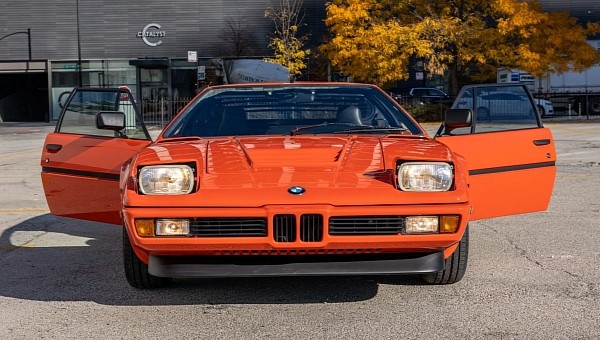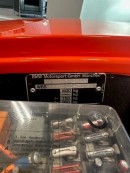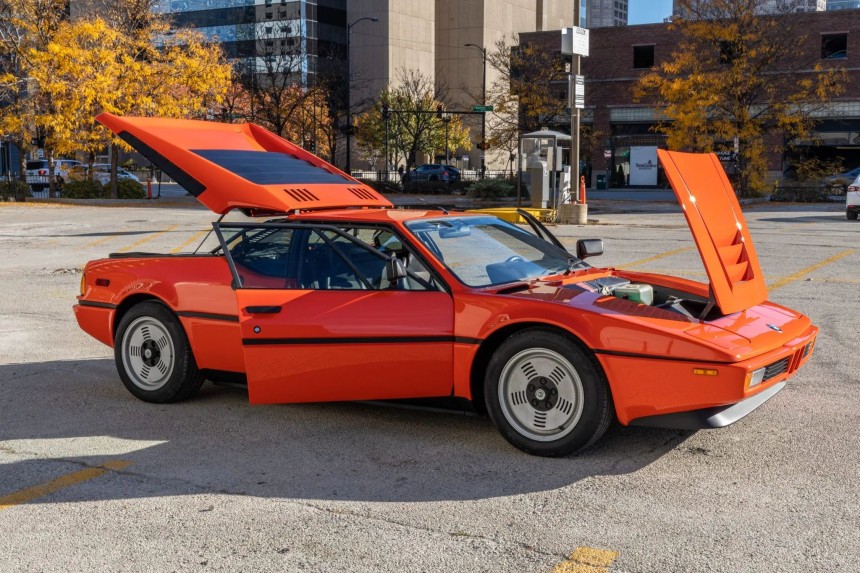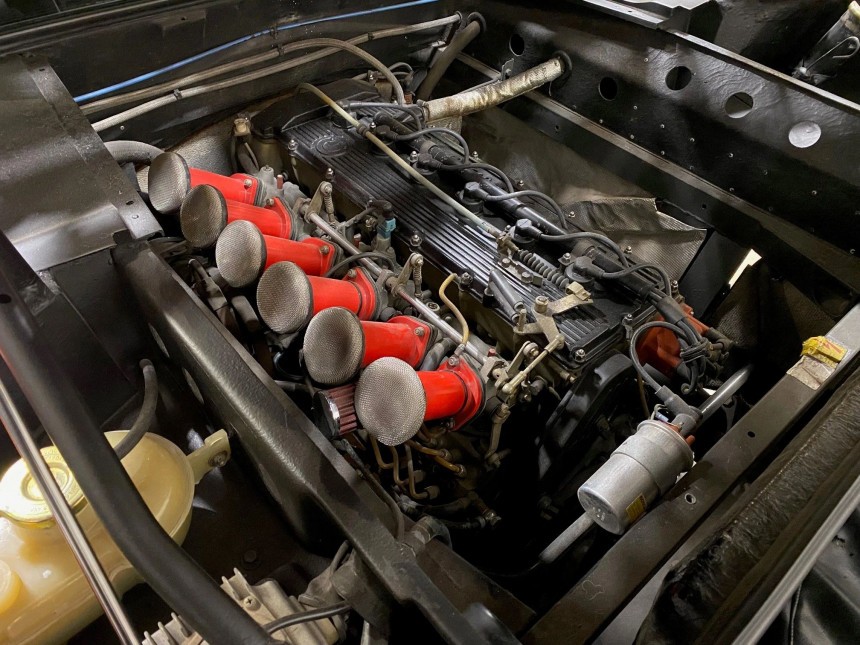The i8 plug-in supercar wasn’t the first mid-engine production car to wear the BMW roundel. The original comes in the guise of the M1, the first road-going car in the Bavarian automaker’s history to wear the M badge.
Originally known as BMW Motorsport GmbH, the go-faster division was established in May 1972 with merely 35 employees to its name. Introduced that very month, the E9-based 3.0 CSL was the first car to benefit from the expertise of the performance-oriented subsidiary. Celebrating the 1972 Summer Olympics in Munich, which also happens to be BMW’s home turf, the E25 Turbo concept we have recently covered in minute detail here on autoevolution served as inspiration for the E26 M1.
The first production car to be entirely developed by Motorsport is quite a bit different from its predecessor. For starters, the E25 uses the steel chassis of the 02 Series and the 2.0L turbocharged four-cylinder powerplant of the 2002 Turbo. By comparison, the E26 levels up to a model-specific chassis developed by Gian Paolo Dallara, an aeronautical engineering major who previously worked for the likes of Automobili Lamborghini.
Speaking of which, the Santa’Agata Bolognese-based automaker was commissioned to help Motorsport develop and manufacture the M1. The Raging Bull was desperate for cash back then, which is why BMW secured their help on the cheap. Be that as it may, BMW wasn’t happy with Lamborghini’s work. The Bavarian automaker ripped off the contract in 1978, and Italengineering was then selected as the new partner.
Unfortunately for Italengineering, which consisted of a tightly-knit group of ex-Lamborghini employees, they didn’t have the capacity to manufacture the M1. As a result, chassis production would be handed over to Modena-based Marchesi, and bodywork production was handled by a different Modenese establishment, as in Trasformazione Italiana Resina.
BMW’s hurdles didn’t end there, though. The fiberglass bodywork and interior were brought together by Italdesign in Turin, after which the M1 was sent to German coachbuilding company Bauer for final assembly. Given the complexity of the mid-engine sports car compared to every previous Bimmer before it, final assembly took place completely by hand. After that, BMW Motorsport GmbH took care of final inspection in Munich.
Equipped with unequal wishbones and Bilstein-supplied adjustable dampers at every corner, anti-roll bars at either end and low-profile tires from Pirelli, the M1 stops on a dime thanks to 300- and 297-millimeter disc brakes with separate hydraulic circuits for the front and rear axles. The business end of the M1 is located just behind the seats, namely a special version of the M30 inline-six powerplant first used in the 2500 and 2800.
Loosely based on the M10 four-cylinder introduced by the Neue Klasse, the M88/1 differs from the M30 in quite a number of ways. Think crankshaft, pistons, connecting rods, and a mechanical fuel injection system from FAG Kugelfischer rather than carburetors from Solex/Zenith.
Another tremendous difference over the M30 is the four-valve-per-cylinder head first seen in the 3.0 CSL racing car rather than the road-going car. Magnetti Marelli electronic ignition also needs to be mentioned, along with 46-millimeter throttle bodies for each cylinder. The finishing touches are a five-speed manual transmission supplied by ZF, a hydraulic twin-plate clutch from Fichtel & Sachs, and a limited-slip rear differential.
The mid-mounted sixer is good for 277 metric horsepower (273 brake horsepower) at 6,500 revolutions per minute and 330 Nm (243 pound-feet) of torque at 5,000 revolutions per minute, figures that may not seem too impressive by modern standards. But for 1978 and a displacement of 3,453 cubic centimeters, the M88/1 engine was the bee’s knees back then.
Premiered in October 1978 at the Paris Motor Show, the M1 would end production in July 1981 with 399 road-going cars and 54 racing cars to its name. Chassis number WBS59910004301227 is one of the former, a 1980 model that was delivered new to a German dealer by the name of Autohaus Hautmann. Subsequently imported to the United States, the orange-painted time capsule spent 15 years in a Massachusetts collection.
Then displayed at BMW of San Francisco, the pictured vehicle underwent a color change to white under previous ownership. Reverted to the factory-issue orange in October 2022 by the peeps at Exact Performance in Illinois, the six-cylinder sports car still wears the original 16-inch Campagnolo wheels that measure 7 and 8 inches in width front and rear.
Presently equipped with a matching spare tire under a cover in the rear trunk, 205/55 and 225/50 rubber boots from Pirelli, a Becker Mexico cassette player and radio, as well as a fire extinguisher in the driver’s footwell, this M1 shows only 38,594 kilometers (23,981 miles) on the clock, which is nothing for the sturdy cast-iron block of the M88/1 six-cylinder engine.
Listed on Bring a Trailer with a first-aid kit, recent service records, and a squeaky-clean title, chassis number WBS59910004301227 is perfect in every imaginable respect, right down to the results of the compression test. Upholstered in black leather with checkered cloth inserts, the ultra-collectible sports car is currently sitting on a high bid of $390,000 after 11 offers. The auction will end on Wednesday, December 28th, at 8:00 PM.
The first production car to be entirely developed by Motorsport is quite a bit different from its predecessor. For starters, the E25 uses the steel chassis of the 02 Series and the 2.0L turbocharged four-cylinder powerplant of the 2002 Turbo. By comparison, the E26 levels up to a model-specific chassis developed by Gian Paolo Dallara, an aeronautical engineering major who previously worked for the likes of Automobili Lamborghini.
Speaking of which, the Santa’Agata Bolognese-based automaker was commissioned to help Motorsport develop and manufacture the M1. The Raging Bull was desperate for cash back then, which is why BMW secured their help on the cheap. Be that as it may, BMW wasn’t happy with Lamborghini’s work. The Bavarian automaker ripped off the contract in 1978, and Italengineering was then selected as the new partner.
Unfortunately for Italengineering, which consisted of a tightly-knit group of ex-Lamborghini employees, they didn’t have the capacity to manufacture the M1. As a result, chassis production would be handed over to Modena-based Marchesi, and bodywork production was handled by a different Modenese establishment, as in Trasformazione Italiana Resina.
Equipped with unequal wishbones and Bilstein-supplied adjustable dampers at every corner, anti-roll bars at either end and low-profile tires from Pirelli, the M1 stops on a dime thanks to 300- and 297-millimeter disc brakes with separate hydraulic circuits for the front and rear axles. The business end of the M1 is located just behind the seats, namely a special version of the M30 inline-six powerplant first used in the 2500 and 2800.
Loosely based on the M10 four-cylinder introduced by the Neue Klasse, the M88/1 differs from the M30 in quite a number of ways. Think crankshaft, pistons, connecting rods, and a mechanical fuel injection system from FAG Kugelfischer rather than carburetors from Solex/Zenith.
Another tremendous difference over the M30 is the four-valve-per-cylinder head first seen in the 3.0 CSL racing car rather than the road-going car. Magnetti Marelli electronic ignition also needs to be mentioned, along with 46-millimeter throttle bodies for each cylinder. The finishing touches are a five-speed manual transmission supplied by ZF, a hydraulic twin-plate clutch from Fichtel & Sachs, and a limited-slip rear differential.
The mid-mounted sixer is good for 277 metric horsepower (273 brake horsepower) at 6,500 revolutions per minute and 330 Nm (243 pound-feet) of torque at 5,000 revolutions per minute, figures that may not seem too impressive by modern standards. But for 1978 and a displacement of 3,453 cubic centimeters, the M88/1 engine was the bee’s knees back then.
Then displayed at BMW of San Francisco, the pictured vehicle underwent a color change to white under previous ownership. Reverted to the factory-issue orange in October 2022 by the peeps at Exact Performance in Illinois, the six-cylinder sports car still wears the original 16-inch Campagnolo wheels that measure 7 and 8 inches in width front and rear.
Presently equipped with a matching spare tire under a cover in the rear trunk, 205/55 and 225/50 rubber boots from Pirelli, a Becker Mexico cassette player and radio, as well as a fire extinguisher in the driver’s footwell, this M1 shows only 38,594 kilometers (23,981 miles) on the clock, which is nothing for the sturdy cast-iron block of the M88/1 six-cylinder engine.
Listed on Bring a Trailer with a first-aid kit, recent service records, and a squeaky-clean title, chassis number WBS59910004301227 is perfect in every imaginable respect, right down to the results of the compression test. Upholstered in black leather with checkered cloth inserts, the ultra-collectible sports car is currently sitting on a high bid of $390,000 after 11 offers. The auction will end on Wednesday, December 28th, at 8:00 PM.




































